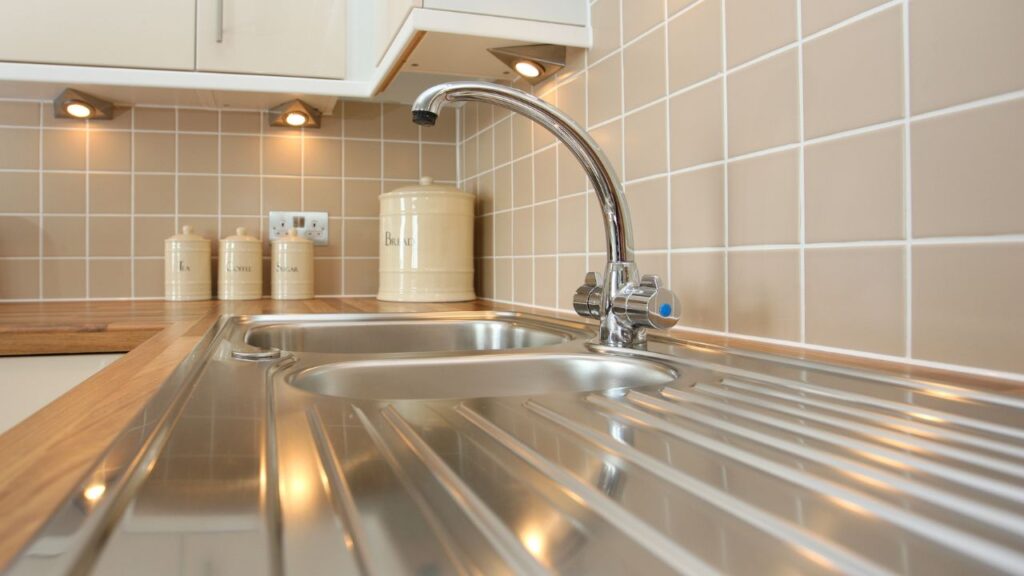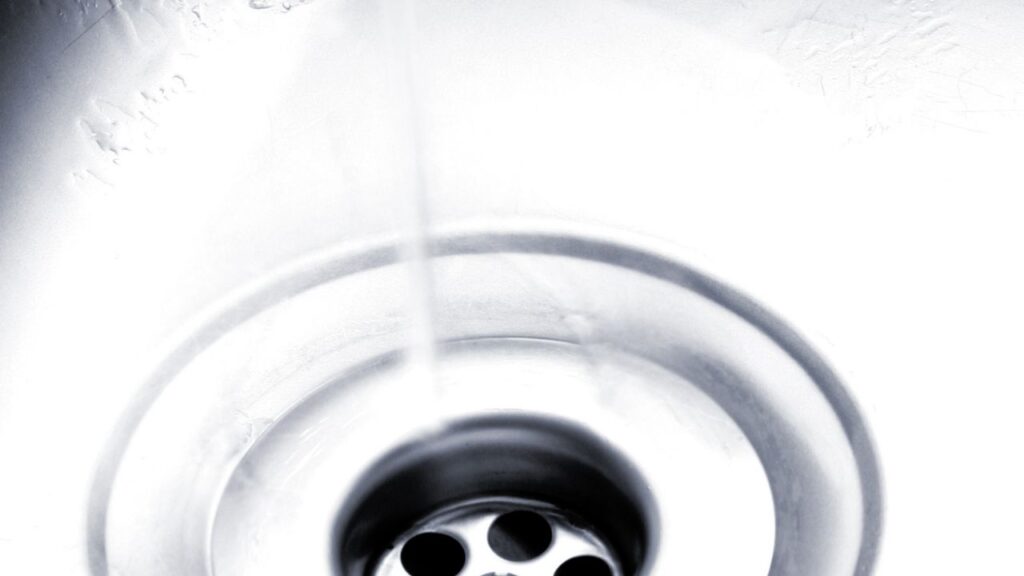Have you ever entered the kitchen and been met by an unpleasant smell coming from your sink? Cooking or preparing food while the aroma is hanging in the air is an unwelcome distraction. There are several ways you can eliminate those nasty smells.
It is also a good idea to determine what initially caused the stink in the sink. That way, you could avoid running into the same problem in the future.
Table of Contents
What Causes a Smelly Sink?

It’s all good and well, eliminating the current smell coming from your sink. But unless you get to the bottom of why it occurred in the first place, you will likely encounter the same issues later on.
The most common cause of smelly sinks is a build-up of food or debris in the sink’s drainpipe. How many times have you used to finger to break up food remnants sitting in the plughole of your sink and helped it along its way with a blast of water from the tap?
The majority of the food will disperse along with the water. Unfortunately, some of it may cling to the sides of the pipe or lodge itself in the U-bend. The longer the food sits there, the likelihood of bacteria causing it to decay increases. Resulting in an unpleasant stench.
The whiff coming from your sink may also result from smells coming up the pipes from the sewer. This can happen when no water is in the U-bend due to a leak or evaporation. This will allow gases from the sewers to drift up the pipes and into the sink.
Eliminating the Smells from your Sink
Once you have determined the cause of the nasty smells, you can begin to freshen it up, allowing you to carry on cooking in a kitchen free of foul odors. You can put the yellow pages aside and keep your money safely in your pocket. Using these methods means you won’t be needing a plumber.
Boiling Water
The most straightforward way of ridding your sink of nasty smells is to tip boiling water down the plughole. Make sure you put it slowly and a bit at a time to avoid splashing yourself.
Once you’ve finished with the water, wait five to ten minutes before turning on the cold-water tap. The blast of cold water will hopefully force any remaining food remnants and grease to flush away.
Boiling water can help clear a smelly sink by effectively breaking down and flushing away the organic matter and bacteria that might be causing the unpleasant odor.
The process is quite simple and can be done using the following steps:
- Remove any visible debris: Before pouring boiling water into the sink, remove any visible debris or solid materials that might be causing the blockage. This will allow the hot water to penetrate deeper into the pipes.
- Boil water: Boil a pot or kettle of water. It’s important to use fresh water and bring it to a rolling boil.
- Pour the boiling water: Carefully pour the boiling water down the drain. Start by pouring it slowly, then gradually increase the flow to avoid any splashing or potential injury. The high temperature of the water helps to dissolve and wash away any greasy residues, food particles, and other organic materials that have accumulated in the sink’s drain and pipes.
- Repeat if necessary: If the smell persists or if there are still signs of blockage, you can repeat the process until the water runs freely and the odor subsides.
It’s essential to note that boiling water can be effective for mild cases of sink odor caused by organic matter buildup. However, if the problem persists or the smell is exceptionally foul, it might be an indication of a more serious issue in your plumbing system. In such cases, it’s best to consult a professional plumber to identify and address the underlying problem.
For sinks with garbage disposals, avoid pouring boiling water directly into the disposal as it may damage the unit; use warm water instead.
White Vinegar
White vinegar. This natural, non-toxic bacteria-killing machine can be used for numerous jobs around the house-including freshening up smelly sinks. Typically, when using the liquid to clean surfaces around the house, you’d mix it with five parts water. In this instance, there is no need.
Simply tip a small amount of vinegar down the sink and wait thirty minutes. Once the time has elapsed, pour hot water down the plughole. That’s it. The vinegar should have done the trick while the water helps flush away what remains.

How does this method work?
- Acidity: White vinegar is a weak acetic acid, and its acidic nature helps to dissolve and break down organic materials that may be causing the unpleasant smell in the sink. This includes food particles, grease, and other residues that can accumulate over time.
- Odor neutralization: Vinegar is known for its ability to neutralize odors. When it comes into contact with the smelly substances in the sink, it reacts chemically and eliminates the foul smell instead of merely masking it.
Here’s how to use white vinegar to freshen up a smelly sink:
- Gather supplies: You’ll need white vinegar and a pot or kettle to boil water.
- Pour vinegar down the sink: Start by pouring about half a cup to one cup of white vinegar down the smelly drain. Allow it to sit for a few minutes, giving it time to work on breaking down the organic matter and neutralizing odors.
- Boil water: While the vinegar is working its magic, boil water in a pot or kettle.
- Flush with boiling water: Carefully pour the boiling water down the drain after the vinegar has had some time to work. The hot water will help wash away the dissolved residues and any remaining odor-causing substances.
- Repeat if needed: For particularly stubborn odors, you can repeat the process a few times until the smell improves or disappears completely.
It’s worth noting that while white vinegar is generally safe for most sinks and plumbing systems, it’s always a good idea to avoid using vinegar or any acidic substances on marble, granite, or other sensitive surfaces, as it can cause etching or damage. Also, be cautious when using vinegar in combination with baking soda, as the fizzing reaction that occurs can sometimes cause clogs or push odorous substances further down the pipes. When in doubt, consult a professional plumber for advice.
Twice the Power with Baking Soda
White vinegar is a powerful tool in the fight against certain bacteria and viruses. Used alongside baking soda, it becomes an even more powerful weapon in your cleaning arsenal.
Baking soda’s effectiveness is due to its ability to dissolve dirt and grease when used in conjunction with certain other liquids such as white vinegar.
Using the combination of vinegar and baking soda to clean your sink couldn’t be simpler. Measure one cup of baking soda and vinegar and pour the powder, followed by the vinegar, down the sink and wait a few hours before flushing the solution away with boiling water.
Some people choose to wait fifteen minutes or so before dispersing the vinegar down the sink. You can try both methods to see what suits your circumstances best.

Coarse Salt
Sea salt and kosher salt grains are larger than regular table salt, making them ideal abrasion tools. Their abrasive capabilities help remove food and debris that cling onto the inside of pipes.
Measure around half a cup of course salt and mix with boiling water. Pour the solution down the sink and leave it-voila! The liquid mix should have dispersed any unwanted food or debris causing those unpleasant stenches.
Final thoughts 💭
All the above methods work. Which one you choose to use will be determined by the severity of your problem. You’ll likely need to carry out one or more of the procedures more than once as you’re never going to avoid food going down your sink entirely.




